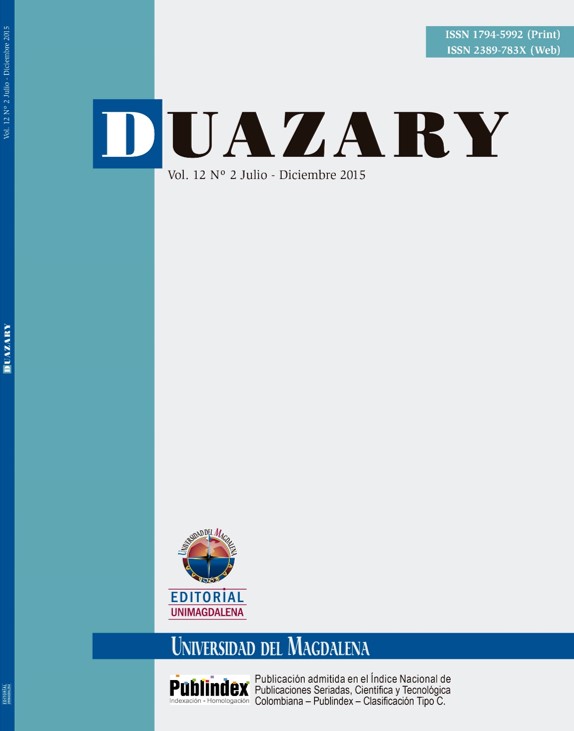Homofobia internalizada en hombres homosexuales: un estudio cualitativo
Contenido principal del artículo
Resumen
Descargas
Detalles del artículo
No se permite un uso comercial de la obra original ni de las posibles obras derivadas, la distribución de las cuales se debe hacer con una licencia igual a la que regula la obra original.
Citas
Arboleda-Florez J. Stigma and discrimination: an overview. World Psychiatry. 2005;4(1):8-10.
Dovidio JF, Kawakami K, Johnson C, Johnson B, Howard A. On the nature of prejudice: Automatic and controlled processes. J Exp Soc Psychol. 1997;33(5):510-40.
Haghighat R. A unitary theory of stigmatisation. Pursuit of self-interest and routes to destigmatisation. Br J Psychiatry. 2001;178(3):207-15.
Phelan JC, Link BG, Dovidio JF. Stigma and prejudice: one animal or two? Soc Sci Med. 2008;67(3):358-67.
Fiske ST. Intergroup biases: a focus on stereotype content. Cur Opin Behav Sci. 2015; 3(1):45-50.
Lucas JW, Phelan JC. Stigma and status: The interrelation of two theoretical perspectives. Soc Psychol Q. 2012;75(4):310-33.
Link BG, Phelan J. Stigma power. Soc Sci Med. 2014;103(1):24-32.
Link BG, Phelan JC. Conceptualizing stigma. Annu Rev Sociol. 2001;27(1):363-85.
Major B, O’Brien LT. The social psychology of stigma. Ann Rev Psychol. 2005; 56(1):393-421.
Knight C. The injustice of discrimination. South Afr J Philos. 2013;32(1):47-59.
Ahmad S, Bhugra D. Homophobia: an updated review of the literature. Sex Relation Ther. 2010;25(4):447-55.
Herek GM. The psychology of sexual prejudice. Curr Direction Psychol Sci. 2000;9(1):19-22.
Herek GM. Confronting sexual stigma and prejudice: Theory and practice. J Soc Iss. 2007;63(4):905-25.
Ardila R. Homosexualidad y psicología. Bogotá: Manual Moderno; 2002.
Adebajo SB, Eluwa GI, Allman D, Myers T, Ahonsi BA. Prevalence of internalized homophobia and HIV associated risks among men who have sex with men in Nigeria. Afr J Reprod Health. 2012;16(1):21-8.
Herek GM, Gillis JR, Cogan JC. Internalized stigma among sexual minority adults: Insights from a social psychological perspective. J Counsel Psychol. 2009;56(1):32-56.
Vu L, Tun W, Sheehy M, Nel D. Levels and correlates of internalized homophobia among men who have sex with men in Pretoria, South Africa. AIDS Behav. 2012;16(3):717-23.
Campo-Arias A. Essential aspects and practical implications of sexual identity. Colomb Med. 2010;41(2):179-85.
Cantillo L. La población de lesbianas, gays, travestis, bisexuales e intersexuales (LGBTI) en el departamento del Atlántico. Manzana de la Discordia. 2013;8(1):23-35.
Bolding G, Davis M, Hart G, Sherr L, Elford J. Gay men who look for sex on the Internet: is there more HIV/STI risk with online partners? AIDS. 2005;19(9):961-8.
Vásquez E. Hacerse hombre: algunas reflexiones desde las masculinidades. Polit Soc. 2013;50(3):817-35.
Link BG, Phelan J. Stigma power. Soc Sci Med. 2014;103(1):24-32.
Grey JA, Robinson BBE, Coleman E, Bockting WO. A systematic review of instruments that measure attitudes toward homosexual men. J Sex Res. 2013;50(3-4):329-52.
Igartua KJ, Gill K, Montoro R. Internalized homophobia: A factor in depression, anxiety, and suicide in the gay and lesbian population. Can J Community Mental Health. 2003;22(1):15-30.
Newcomb ME, Mustanski B. Internalized homophobia and internalizing mental health problems: A meta-analytic review. Clin Psychol Rev. 2010;30(8):1019-29.
Levy JA, Strombeck R. Health benefits and risks of the Internet. J Med Syst. 2002;26(6):495-510.
Elo S, Kyngäs H. The qualitative content analysis process. J Adv Nurs. 2008;62(1):107-15.
Sandelowski M. Sample size in qualitative research. Res Nurs Health. 1995;18(2):179-83.
Strauss A, Corbin J. Basic of qualitative research. Techniques and procedures for developing ground theory. London: Sage Publications, Inc.; 1998.
Atlas ti 5.02. Berlin: ATLAS.ti GmbH; 2006.
Zoccali R, Muscatello MR, Bruno A, Serranò D, Campolo D, Pandolfo G, et al. Gender role identity in a sample of Italian male homosexuals. J Homosex. 2008;55(2):265-73.
Martin JI. Nosology, etiology, and course of gender identity disorder in children. J Gay Lesb Mental Health. 2008;12(1-2):81-94.
van Wijngaarden JWDL. Between money, morality and masculinity: bar-based male sex work in Chiang Mai. J Gay Lesb Soc Serv. 1999;9(2-3):193-218.
Barraza NM. Discriminación salarial y segregación laboral por género en las áreas metropolitanas de Barranquilla, Cartagena y Montería. Serie Documentos IEEC. 2010;31(1):1-44.
Pérez A, Correa G, Castañeda W, Plata E. Raros… y oficios. Diversidad sexual y mundo laboral: discriminación y exclusión. Medellín: Escuela Nacional Sindical & Corporación Caribe Afirmativo; 2013.
Campo-Arias A, Oviedo HC, Herazo E. Estigma y discriminación a profesional de la salud transgénero. Rev Fac Med. 2014;64(1):41-5.
Blackwell CW, Ricks JL, Dziegielewski SF. Discrimination of gays and lesbians: A social justice perspective. J Health Soc Policy. 2004;19(1):27-43.
Connell RW. A very straight gay: Masculinity, homosexual experience, and the dynamics of gender. Am Sociol Rev. 1992;57(6):735-51.
De Visser RO, Smith JA, McDonnell EJ. ‘That’s not masculine’. Masculine capital and health-related behaviour. J Health Psychol. 2009;14(7):1047-58.
Ayres I, Luedeman R. Tops, bottoms, and versatiles: What straight views of penetrative preferences could mean for sexuality claims under price waterhouse. Yale Law J. 2013;123(3):720-51.
Martin HP. The coming-out process for homosexuals. Hosp Community Psychiatry. 1991;42(2):158-62.
Chonody JM, Rutledge SE, Smith S. “That's so gay”: Language use and antigay bias among heterosexual college students. J Gay Lesb Soc Serv. 2012;24(3):241-59.
Woodford MR, Howell ML, Silverschanz P, Yu L. “That's so gay!”: Examining the covariates of hearing this expression among gay, lesbian, and bisexual college students. J Am Coll Health. 2012;60(6):429-34.
Burn SM, Kadlec K, Rexer R. Effects of subtle heterosexism on gays, lesbians, and bisexuals. J Homosex. 2005;49(1):23-38.
Herek GM, Garnets LD. Sexual orientation and mental health. Annu Rev Clin Psychol. 2007;3(3):353-75.
Meyer IH. Minority stress and mental health in gay men. J Health Soc Behav. 1995;36(1):38-56.
Miller CT, Kaiser CR. A theoretical perspective on coping with stigma. J Soc Iss. 2001;57(1):73-92.
Meyer IH. Prejudice, social stress, and mental health in lesbian, gay, and bisexual populations: Conceptual issues and research evidence. Psychol Bull. 2003;129(5):674-697.
Jorm AF, Korten AE, Rodgers B, Jacomb PA, Christensen H. Sexual orientation and mental health: results from a community survey of young and middle-aged adults. Br J Psychiatry. 2002;180(5):423-7.
Rosser BS, Bockting WO, Ross MW, Miner MH, Coleman E. The relationship between homosexuality, internalized homo-negativity, and mental health in men who have sex with men. J Homosex. 2008;55(2):185-203.

